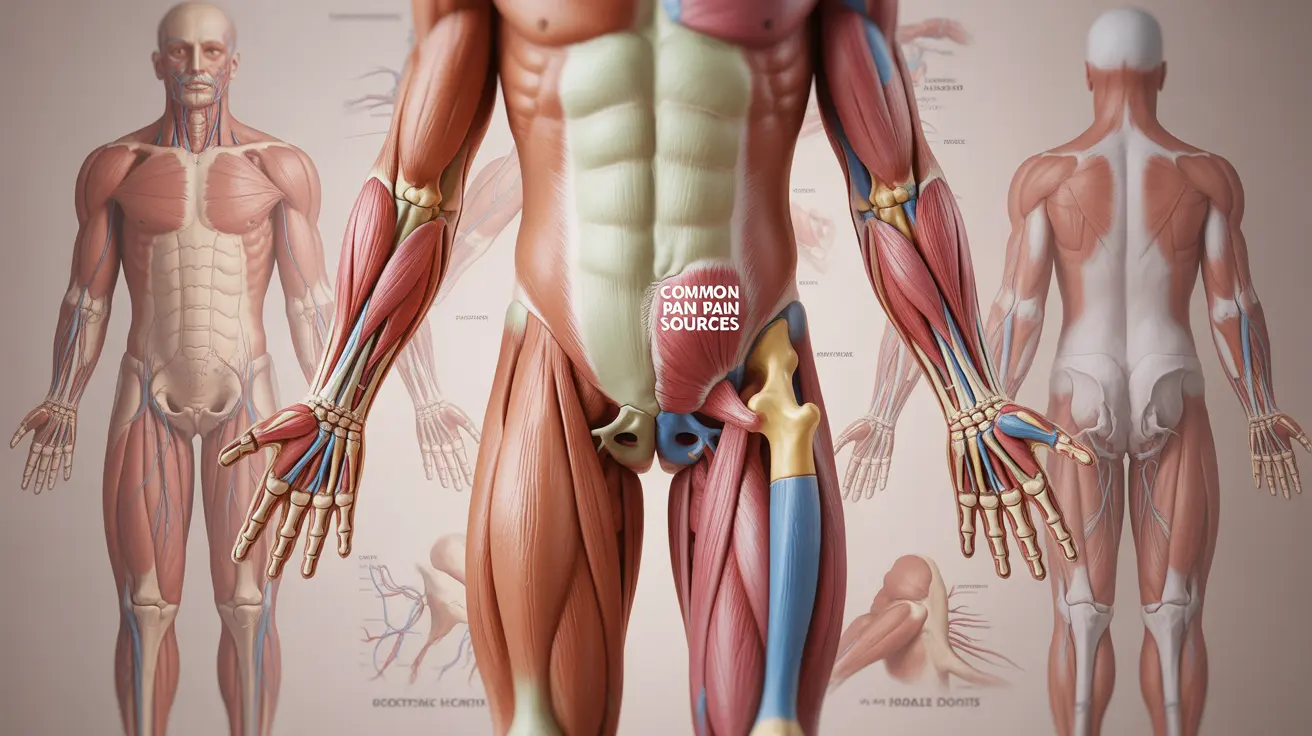Experiencing pain in the right hip and groin area can be both uncomfortable and concerning. This type of pain can significantly impact daily activities, from walking and exercising to simply getting up from a chair. Understanding the underlying causes and available treatment options is crucial for managing this condition effectively.
Whether you're dealing with a sudden injury or chronic discomfort, this comprehensive guide will help you understand the various aspects of right hip and groin pain, including common causes, diagnostic approaches, and effective treatment strategies.
Common Causes of Right Hip and Groin Pain
Several conditions can lead to pain in the right hip and groin area, ranging from muscle strains to more serious joint issues:
Muscle-Related Causes
- Muscle strains or tears
- Hip flexor injuries
- Groin pulls
- Overuse injuries
Joint-Related Issues
- Hip osteoarthritis
- Labral tears
- Hip impingement
- Bursitis
Other Medical Conditions
- Sports hernias
- Inguinal hernias
- Nerve compression
- Referred pain from back problems
Identifying the Source of Your Pain
Different types of pain can indicate various underlying conditions. Understanding these patterns can help with diagnosis:
Pain Characteristics
- Sharp, sudden pain often indicates an acute injury
- Dull, persistent ache might suggest arthritis
- Burning or radiating pain could signal nerve involvement
- Pain that worsens with specific movements may indicate muscle strain
Treatment Options and Management
Treatment approaches vary depending on the underlying cause and severity of the pain:
Conservative Treatment
- Rest and activity modification
- Ice or heat therapy
- Over-the-counter pain medications
- Gentle stretching exercises
- Physical therapy
Medical Interventions
- Prescription medications
- Corticosteroid injections
- Physical therapy programs
- Surgery (in severe cases)
Prevention Strategies
Taking proactive steps can help prevent future hip and groin pain:
- Proper warm-up before exercise
- Regular stretching routines
- Maintaining proper posture
- Strengthening core and hip muscles
- Using appropriate equipment during sports activities
When to Seek Medical Attention
Certain symptoms warrant immediate medical evaluation:
- Severe pain that limits daily activities
- Pain accompanied by swelling or redness
- Inability to bear weight on the affected side
- Pain that persists despite home treatment
- Signs of infection such as fever
Frequently Asked Questions
What are the most common causes of pain in the right hip and groin area?
The most common causes include muscle strains, hip flexor injuries, arthritis, labral tears, and various types of hernias. Sports injuries and overuse are frequently responsible for acute cases, while chronic conditions like osteoarthritis typically develop over time.
How can I tell if my right hip and groin pain is from a muscle strain, tendinitis, or a joint problem?
Muscle strains typically cause sharp pain during movement and are often tender to touch. Tendinitis usually presents as pain that worsens with specific movements and improves with rest. Joint problems often cause deep, aching pain and may be accompanied by stiffness, particularly in the morning.
What treatments are effective for managing pain in the right hip and groin?
Effective treatments include rest, ice/heat therapy, physical therapy, anti-inflammatory medications, and specific exercises. The most appropriate treatment depends on the underlying cause and may require a combination of approaches for optimal results.
When should I see a doctor for persistent or severe pain in my right hip and groin?
Seek medical attention if pain is severe, persists for more than a few days, prevents normal movement or weight-bearing, or is accompanied by swelling, redness, or fever. Additionally, any sudden, intense pain should be evaluated promptly.
How can I prevent repetitive injuries or chronic pain in the right hip and groin?
Prevention strategies include maintaining proper form during exercise, gradually increasing activity levels, regular stretching and strengthening exercises, wearing appropriate footwear, and avoiding overtraining. Core stability exercises and proper warm-up routines are also essential for prevention.




